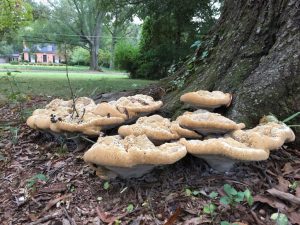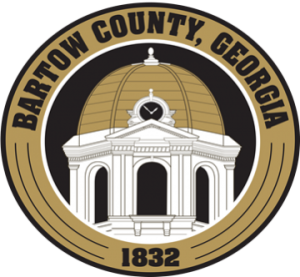 Question: Should I be worried about fungi growing out of the side of my old oak tree?
Question: Should I be worried about fungi growing out of the side of my old oak tree?
Drought stress, construction injury, soil compaction and girdling roots will injure tree roots and provide an entry point for wood decay fungi. Storm damage, improper pruning, and wounding of trunks and branches also lead to wood decay fungi entry and infection. What we are seeing now are many trees across the state falling due to decayed roots and saturated soils from recent rains. A full canopy of leaves acts like a sail in the wind, which puts pressure on the roots. Trees infected with wood decay fungi will fail at some point. It’s not a question of whether a tree showing signs of wood decay fungi will fail. It’s a question of when.
Wood decay fungi can be classified into two broad categories: white-rot and brown-rot fungi. White-rotting fungi are those that rapidly breakdown lignin and eventually cellulose inside the cell walls of tree wood. The infected wood becomes soft, spongy, or stringy and turning a white or yellow coloration. It is usually a root and buttress rot by a white-rot fungus that causes hardwood trees to fail and fall. Brown-rotting fungi are those that primarily breakdown cellulose in wood. As a result, wood turns a brownish color and becomes dry and brittle, which readily crumbles, cracks into cubes, and shrinks. Brown rots are often referred to as a cubical or dry wood rots.
Regardless of the type of rot and what fungus is infecting the tree, if you see conks or mushrooms growing on the tree trunk or root flare, then the tree is in advanced stages of infection and decay and there is a concern for possible tree failure. It takes years for infection and growth of the fungus in the wood to produce outward signs of conks and mushrooms. At present, methods to accurately detect how much rot is present in the wood do not exist. There are methods to detect internal cavities in trees to determine the thickness of a trunk shell, but measurements of spongy wood is difficult. A certified arborist should be hired if you would like to determine the extent of internal cavities or voids inside trees. This information can be helpful in deciding how much of a potential hazard that a tree poses to falling or breaking. Trees that have known wood decay issues, if left standing, should be inspected annually be a certified arborist. To locate a local certified arborist, there is an online directory available at https://www.treesaregood.org/findanarborist.
There is no cure for wood decay. When decay fungi are present, it’s only a matter of time before they compromise the strength of the tree’s stems or roots and eventually cause the tree to break or fall. Tree injuries are permanent and will continue to be potential entry points for moisture, rotting, and wood-decaying fungi. The larger the injury, the longer it takes for a tree to compartmentalize and wall-off the wound. When pruning larger trees, proper pruning practices performed by a certified arborist are necessary to ensure rapid wound closure and minimize unnecessary injuries to the tree. Ideally, trees should be pruned and trained when young to avoid the need for removing larger limbs later. Pruning paints are not recommended, since studies have shown they can actually slow wound closure. The best management approach is preventing injury to trunks, branches, and roots. For more information, see our free Extension publications on “Shade and Street Tree Care” online at https://t.uga.edu/hx or “Storm Damaged Trees: Prevention and Treatments” at https://t.uga.edu/3D .
This articles was adapted with permission from Dr. Jean Williams-Woodward, Extension Plant Disease Specialist for the University of Georgia in Athens, GA.
###
Paul Pugliese is the Extension Coordinator and Agriculture & Natural Resources Agent for Bartow County Cooperative Extension, a partnership of The University of Georgia, The U.S. Department of Agriculture, and Bartow County. (770) 387-5142. For more information and free farm, lawn, or garden publications, visit our local website at www.caes.uga.edu/extension/bartow .
